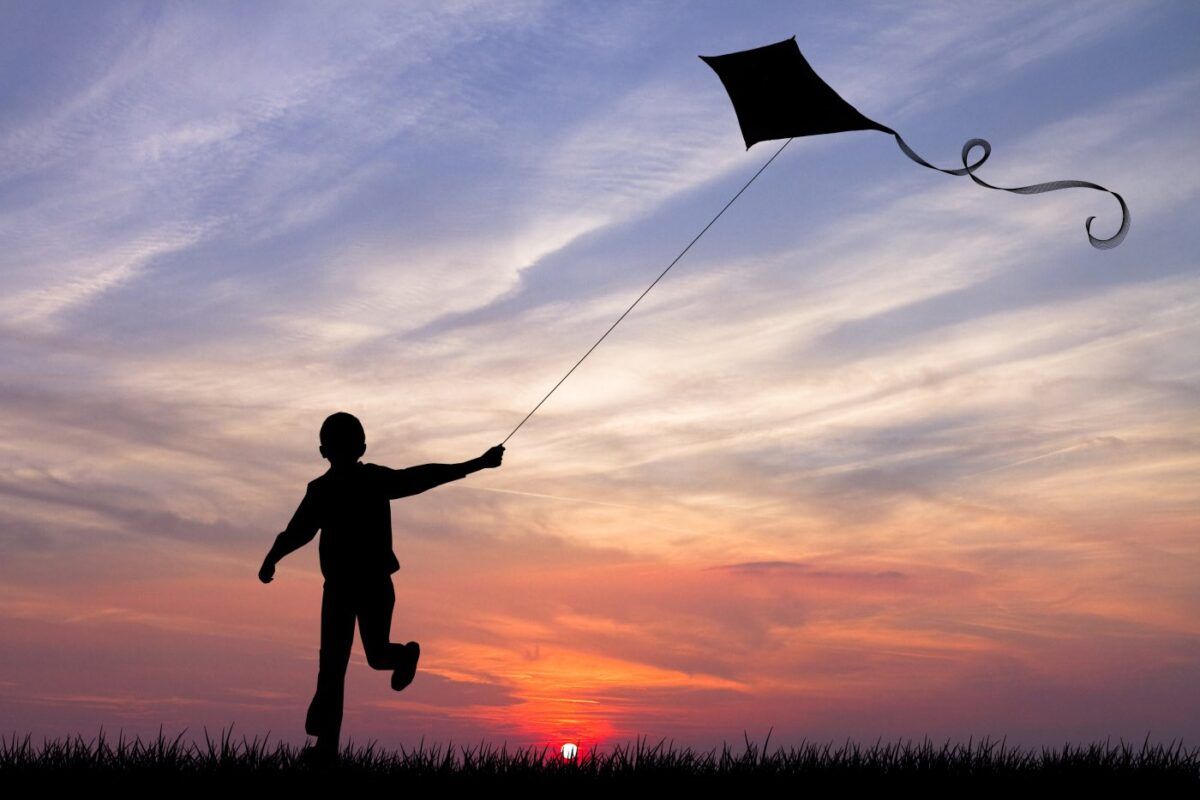Last week was Makar Sankranti. As you must be aware, the festival celebrations are incomplete without kite flying. For the past two years, my son, Satyam (now ten), has been dragging us down to the gardens where residents come together for kite flying. My husband, Akshay, shudders at these requests. I, on the other hand, add fuel to the fire by reminding him to spend quality time with the child. While Aki(Akshay) boasts of knowing everything about kite flying, “oh, I’ve flown them for years in Delhi’, we are still waiting for him to exhibit some expertise. It’s the same old ritual every year. Both father and son buy a kite with gusto. They come armed with the spool or ‘charkhi,’ with white string and colourful manjha (the sharp thread). In vain, Aki tries to thread the kite but gives up after one and a half steps. The preliminaries, like measuring the string, tying the knots, and maintaining balance, send him into a tizzy. Once he manages to tie the knots, they go down with a genuine love for kites in their hearts. Invariably, the wind does not pick up. For reasons unknown, it forever remains inert when the boys in my house decide to fly a kite. Oh, the incorrigible wind!
This short dramatic kite flying activity usually culminates with the father-son duo getting frustrated and coming back home for more worthy pursuits: ludo, dart game, archery (aimed at the windchimes in the balcony), or guerilla warfare with nerf guns. But life catches up. There’s so much and so long that you can ‘engage ‘(read divert) your children. The age of innocence comes with a validity period. This year, Akshay was taking an afternoon siesta on the couch when my son Satyam manifested with a kite and spool.
“Baba, let’s go fly a kite,” he jumped in excitement. Our eight-year-old niece, his faithful compatriot, bolstered the request further.
“Come on, baba, Cheenu anna needs your help.” In all matters of games and going out, my son and niece (Meethi) present a joint force. Always.
“You never play with us. Come on, baba.”
Akshay was still trying to recover from the onslaught of requests and threats. A helpless expression of “God, give me strength’, was writ large on his face. A minute back, he was cradled in the lap of luxury, sunk in the couch, dreaming of vada pav while a cricket match droned on the television. Ah, the vagaries of life! The happiness of a relaxing man is short-lived, indeed.
I tried to intervene. “Why don’t you take them? It’s only once a year.”
“Threading the kite is a tricky business. If you thread it, I’ll take them down; I promise.” The ball was in my court.
“Okay, how difficult can it be? I’ll search on YouTube,” said I.
“Sure, thread it. I can never get that right. Then I’ll take them down.”
He sunk back into the couch, knowing well that he had comfortably transacted 45 minutes of uninterrupted ‘me time.’
YouTube never disappoints. Type out your request, and you’ll find hordes of good Samaritans pumping life energy into making videos at your silliest demands. I remembered the appropriate lingo from childhood: “Patang ke kanne kaise bandhen’ and typed it in. Viola! there were many videos about it. An expert, patangbaaz, was explaining the tricks of the trade in easy-to-follow steps. I didn’t want to miss anything, any teeny-weeny detail that would derail the kite, so I paused the video every now and then. Sometimes it became difficult to fathom if the thread had to go from the front or the rear. Steadily, the root cause of my husband’s irritation began to become clear. It began to grip me too. I could feel the irritation bubble rise within me. More so, as I saw him lounging, his legs on the ottoman stool, popping orange slices while watching TV.
Nevertheless, I soldiered on and threaded the kite in about 20-25 minutes. My son and niece squealed in delight.
Akshay examined the kite like a pro. “This looks quite good. Let’s go down.”
The Kite that Refused to Fly
There were many people in the park, each with a fancy kite and fancier charkhi. The threading was fine; the middle stick was bent (just right), as explained in the video. All preliminary checks done, Akshay asked Satyam to hold the kite in front of his face and then release it when he called out for it from the other end. Don’t we all know these antics? That’s how you fly a kite. However, most of these efforts can prove ineffectual if it’s not your day. Our kite flopped to the ground as if offended. Akshay tried again. Satyam and Meethi pumped him up.
“Come on, Baba; you can do it.”
Yet again, the kite dropped down without making any feeble effort to fly.
“You know it’s the wind,” Akshay said prophetically. “When there is good wind, it would fly. Look around; no one has their kite up.”
He was right. Most people were struggling, barring one.
“How about him? Look, he managed. His kite has gathered quite a height.” I pointed out.
“Oh, that one. He must be an expert flyer, or perhaps he threaded the kite better.” I knew in whose direction the compass pointed now.
Just then, Satyam came running and took over. He wanted to have a go at flying. He just wanted us to push the kite in the air while he handled the string.
“Release the kite,” he hollered.
As the kite soared, he ran around the garden at full speed. People were a bit baffled, some pleasantly surprised with his ingenuous strategy. So long as Satyam ran, the kite screeched along enthusiastically in the sky. This was better than anything we had done so far. His strategy, though devoid of any finesse or technique, worked. He ran without a care in the world, at times scattering people. Sometimes, his kite got entangled with other strings. He calmly retrieved it and began the run up again. Now they did not even need us. Meethi threw up the kite in the air while Satyam ran around happily. Then they swapped roles, and Meethi ran. It did not matter that their kite was not in the sky for too long. More importantly, they had devised a workable plan. They had tasted the joy of flying. And all by themselves.
The Eureka Moment
The moment reminded me of the views of Sir Ken Robinson, the famous speaker, and educationalist. Here are the words from his revolutionary book “The Element.”
“Children are wonderfully confident in their own imaginations. Most of us lose this confidence as we grow up. Ask a class of first graders which of them thinks they’re creative, and they’ll all put their hands up. Ask a group of college seniors the same question, and most of them won’t. I believe passionately that we are all born with tremendous natural capacities and that we lose touch with many of them as we spend more time in the world.”
Children are not scared of making mistakes. When they do not know a particular skill, they are adventurous enough to have a go at it. And this capacity of not being afraid of going wrong lies at the root of all creativity. Sadly, we (and our education systems) take it away as the children grow up. Learning is a work in progress; therefore, there is a need to create environments that do not stigmatize mistakes. You can check out the complete TED talk by Sir Ken Robinson. It is as informative as it is entertaining.

Meanwhile, the run-up kite flying technique became quite a sensation as we found some other children copying the same. People, young and old, were bemused by how two children who did not know how to fly a kite were enjoying themselves doing just that! The day did not end with mindless run-ups. At one point, the elusive wind lifted up their kite. In the last 30 minutes or so, they flew it like experts, loosening and tightening the string as required.
We learned it is ok to fly kites for just the sake of flying and fun. So, let’s all go, fly a kite. The old song was right, after all.










Comments & Discussion
28 COMMENTS
Please login to read members' comments and participate in the discussion.